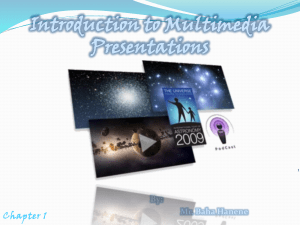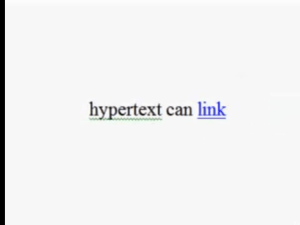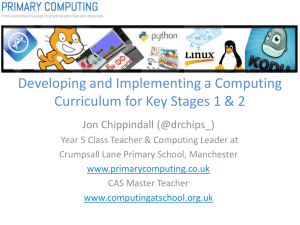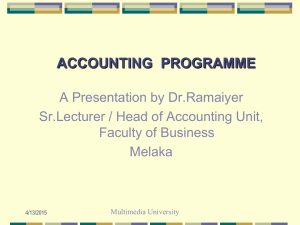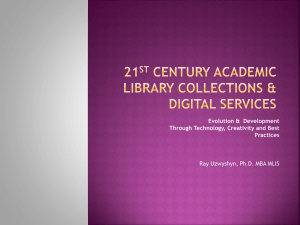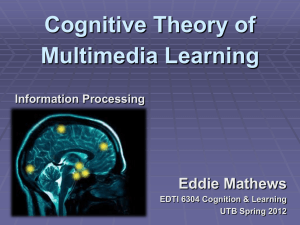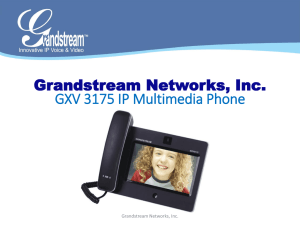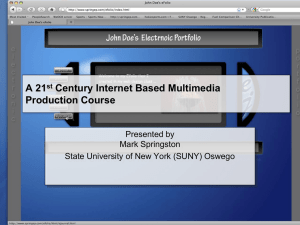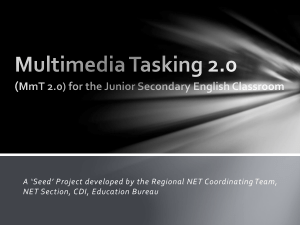Using Multimedia in the Classroom: Which Side
advertisement
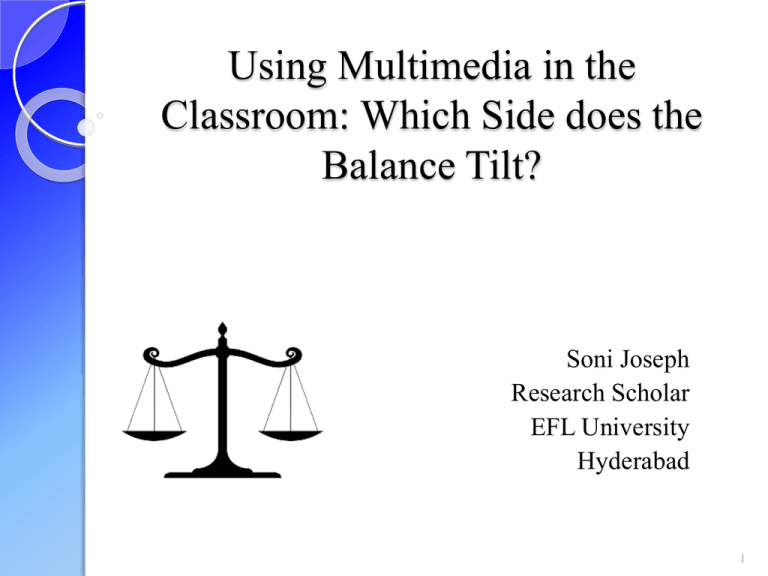
Using Multimedia in the Classroom: Which Side does the Balance Tilt? Soni Joseph Research Scholar EFL University Hyderabad 1 Questions Have you ever used technology in your classroom? Did you face any trouble while using technology in the classroom? 2 Overview This paper is based on an experimental study with D.Ed (formerly TTC) trainees in Kerala. Multimedia was integrated in the English classroom of the trainees and their interaction was studied. The paper presents a comparative account of the pedagogical benefits and problems/ drawbacks of using technology in a classroom in a rural setting. 3 D.Ed Course D.Ed is the pre-service primary teacher training programme in Kerala. Conducted in 102 teacher training institutes (TTIs) in the state. Trainees are mostly from regional medium and their exposure to English is relatively poor. All the subjects (Mathematics, Education, etc)except English are taught in Malayalam. Curriculum is mostly based on theoretical and pedagogical aspects. 4 Cont.. Less weightage is given to the development of language skills. Teacher educators, who are not properly trained, mostly use translation method to teach English. 5 Learning through Multimedia Multimedia can be defined as the combination of text, audio and images in a single instance. It is the “combined use of several media, such as movies, slides, music and lighting, especially for the purposes of education and entertainment” (Brooks, 1997, p.17). 6 Theoretical Bases for Multimedia Learning Constructivism Cognitive learning theory Mayer’s multimedia learning theory Krashen’s Affective filter hypothesis 7 The Experimental Study Examined whether multimedia has any positive effect on the classroom interaction of the trainees. There were three phases for the study. Comparative study was made between regular classes and experimental classes. Multimedia equipment used: LCD projector, Laptop, DVDs, Speakers, Camcorder, and sound recorder. Tools used: Questionnaire, semi-structured interview, classroom recording/ observation checklist. The data obtained were analyzed and triangulated. 8 Findings of the Study Trainees were comfortable with the use of multimedia in the class and it had a positive effect on enhancing the classroom interaction of the trainees. Multimedia helped in improving their confidence level and motivation Learners found multimedia useful because it exposed them to authentic language, improved their pronunciation and knowledge of various language functions and also enriched their vocabulary. When the experimental classes were compared with regular teacher’s classes, it was found that the experimental classes were more effective than the regular teacher’s classes. 9 Problems Faced Lack of infrastructure Too much light in the room Trainees became over conscious about the video recording Problem of echo Time constraint Some other technical problems 10 Some Solutions Plan well – Always have a backup plan Familiarize yourself with the equipment and its functioning Use the correct format for files Rehearse Don’t be over ambitious 11 Suggestions/ Implications Multimedia can be used as a training tool to enhance the language skills (esp. classroom interaction) of teacher trainees. Technology has to be used judiciously with proper planning. Training should be given to the teacher trainers who use technology. A small course on ‘how to handle technological equipment’ can be added to the teacher training curriculum. 12 References Astleitner, H. & Weisner, C. (2004). An integrated model of multimedia learning and motivation. Journal of Educational Multimedia and Hypermedia , 13, 3 - 21. Bagui, S. (1998). Reasons for increased learning using multimedia. Journal of Educational Multimedia and Hypermedia , 7, 3 - 18. Burns, Anne and Jack C. Richards. (Eds.). (2009). Second Language Teacher Education. Cambridge: Cambridge University Press. Cullen, R. (1994). Incorporating a language improvement component in teacher training programmes. ELT journal , 48 (2), 162 - 172. Fang, Liu. (2010). Using multimedia to motivate EFL students' interest in English language learning. Accessed on 12.02.11 from Http:// minds.wisconsin.edu/ bitstream /handle/1793 /... / Liu, %20 Fang.pdf? 1 Jester, R. (2002). If I Had a Hammer: Technology in the Language Arts Classroom. The English Journal, 91 (4), 216 226. Kozma, R. (2001). Learning with media. Review of Educational Research , 61, 179 - 211. Ludwig et al. (2004). Using Multimedia in Classroom Presentations: Best Principles. Mayer, R. E. (1997). Multimedia learning: are we asking the right questions? Educational Psychologist , 32, 1 - 19. ---. (2005). Introduction to multimedia learning. In R. Mayer(Ed.). The Cambridge Handbook of Multimedia Learning . Murdoch, G. (1994). Language development provision in teacher training curricula. ELT journal , 48 (3), 253 - 265. Shin, J. Sarah. (2008). Preparing non-native English-Speaking ESL teachers. Teacher development , 12 (1), 57 - 65. Warschauer, M. (1997). Computer - mediated collaborative learning: Theory and Practice. Modern Language Journal , 81, 470 - 481. 13 Thank you 14
